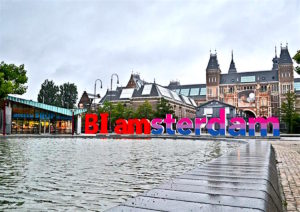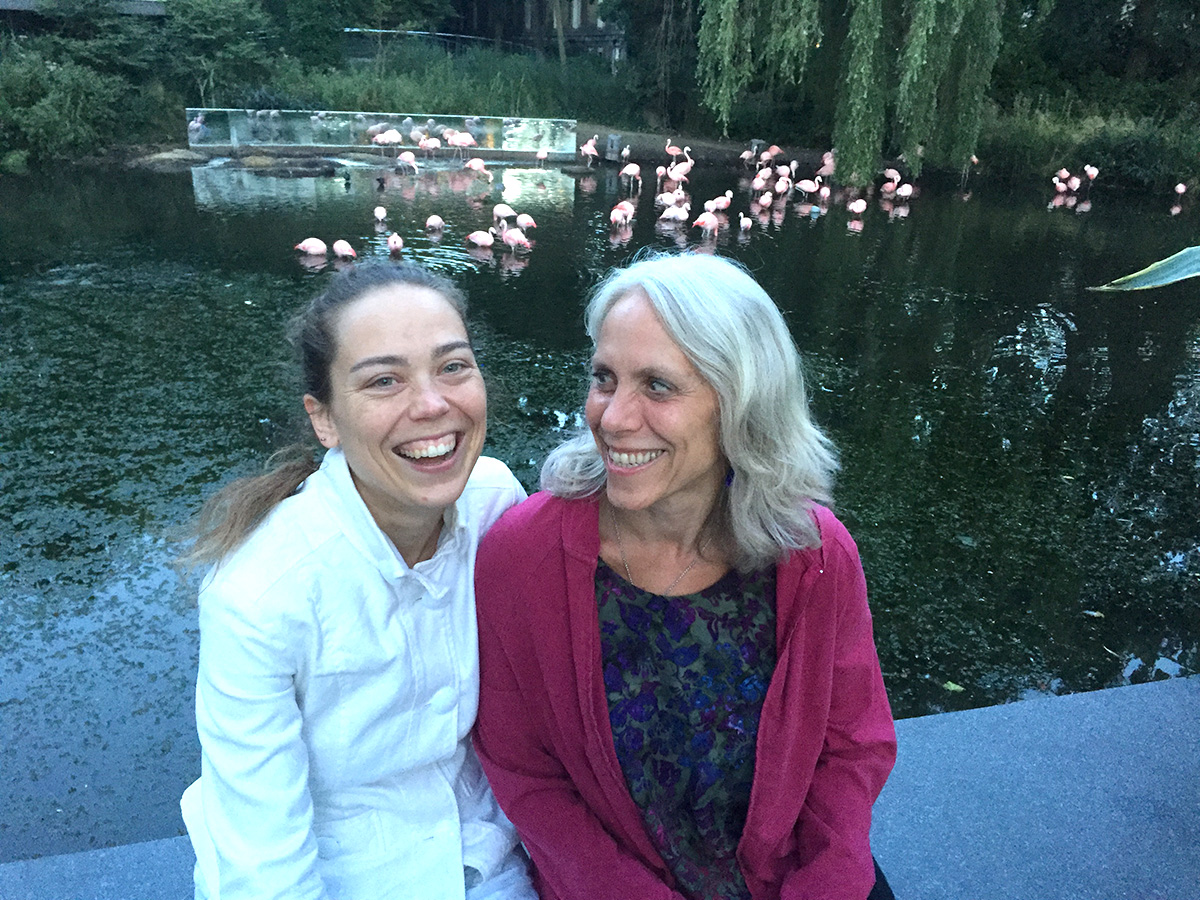By Lila Hartelius, BA
The region of France in which I live was recently invaded by millions of little white butterflies… or were they moths? Few people I asked knew for sure, but more than one had an opinion. They appeared to be either a strange breed of butterfly that stays out at night or an unusual species of moth that braves the daylight, because we would see them under both sun and stars.
One day, a friend concluded that the white-winged creatures that emerged at night could not be the same as those we saw during the day, because while butterflies’ wings flutter horizontally, those of moths oscillate at a diagonal, downward and away from their heads. That night, as my partner and I watched a cloud of these fairy-like beasts batting their wings against our window screen, he assured me that if I looked closely I would see that these were different than their daytime cousins. I studied their bodies carefully and, for a moment, I was almost convinced.

Bisexuality is often thought of as an impossible hybrid of homosexuality and heterosexuality that cannot truly be real. As Robyn Ochs proposed during her workshop “Challenging Biphobia and Bi Erasure” at the European Bisexuality Conference (EuroBiCon) this past summer in Amsterdam, a possible reason for distorted ideas about bisexuality may be people’s tendency to think in binaries. Reactions to the recent butterfly/moth invasion certainly betrayed this inclination: nobody I initially spoke with suggested that these insects might be a species possessing some butterfly characteristics and some moth attributes.
In a recent conversation, a lesbian friend of mine said she imagined it must be difficult to be bisexual because one has two sexualities, homosexual and heterosexual. While agreeing that there are indeed certain challenges associated with being bisexual, I responded that these difficulties come not from a dual sexuality but from an internalization of society’s perception of bisexuality as a dual sexuality. Access to accurate and relevant information about bisexuality, as well as opportunities for contact with other bisexual-identified individuals, can help to mitigate the potentially negative effects of internalizing this and other inaccurate societal conceptions of bisexuality. By contrast, a dearth of these things can prove harmful or even lethal, especially at key moments in one’s psychological and sexual development, such as adolescence.
With relatively little research on bisexuality in existence, identifying opportunities to connect with, learn about, and experience support and validation from other bisexual people is very important for bisexual individuals. This may, however, be easier said than done. Making reference to the work of Clare Hemmings (Professor of Feminist Theory at London School of Economics’s Gender Institute), feminist bisexual and genderqueer activist, writer and researcher Shiri Eisner1 addresses the fact that, “Since in most locations in the world, no (explicitly) bisexual community exists – and even if it does, it does not connect with a broader bisexual culture – bisexuals find themselves coming to terms with our identities in, and through, communities where we are strangers.”
Without a connection to others in one’s sexual identity group, it is difficult to recognize the link between personal challenges and common struggles. Isolation could lead one to pathologize one’s difficulties as merely personal or to ask oneself, “Is it just me?” – in other words, “Is there simply something wrong with me?” It might also make it trickier to notice and respond to even unintentional prejudice in interactions with those of other sexual identities. Isolation and discrimination can leave bisexual people more vulnerable to self-doubt and self-blame. These negative thoughts, when unmitigated can lead to anxiety, depression, and even suicide. For these reasons, I feel that bi+ spaces such as that of EuroBiCon, as well as that of the European Bisexuality Research Conference (EuroBiReCon, the first European conference on bisexuality, which also took place in Amsterdam this summer), are indispensable. As an attendee of these two conferences this July, I can say that one of the most healing things about them was that in my social interactions there – unlike those in much of my daily life – I felt safe to simply connect with people. I did not fear even unwitting homophobia or biphobia as I do in both heterosexual and lesbian/gay spaces. Layers of anxiety melted away as I moved in a world where I didn’t have to refrain from certain topics of conversation in order to avoid less-than-savory responses such as an awkward sting of silence, a few clumsy comments or questions, or the imminent premature change of conversation that always makes my heart sink.
These conferences go beyond providing a space for validating mutual support of peers by also bringing together cutting insight with empowering information. The EuroBiCon workshops (many of which were led by attendees, some of whom were activists or experts in their field) covered a diverse range of themes, some oriented more towards feel-good activities (which addressed the human aspect) and others geared more toward practical tools and knowledge. The latter category included such themes as health and well-being, education, activism, politics, identity, the workplace, and film and media. Academic research papers presented at EuroBiReCon dealt with topics that considered bisexuality through a number of different lenses: culture, communities, identities, relationships, well-being, experience (including in relation to work) and intersections between academia and activism.
EuroBiReCon’s emphasis on credible research was a refreshing change from the ignorant comments or even one-dimensional affirmations bisexuals often receive. The presenters illuminated challenges that are more than personal struggles but collective challenges to holding a sexual identity that is still not widely understood. As it turns out, “It’s not just me.”
The potency of this combination of educational content and peer support that I found at the two conferences has become even more apparent to me in the months since attending them. To my surprise, I have found myself feeling quite comfortable talking openly about bisexuality outside of a bi+ space and with non-bisexual individuals, something which before was always riddled with anxiety for me. Having been exposed to enlightening research about bisexuality, while being immersed in a collective affirmation of my experiences as valid, has given me the confidence and courage to speak about bisexuality from a more informed and balanced standpoint.
The capacity to talk about bisexuality in this way can be important not only for cultivating personal well-being, but also for encouraging constructive dialogue between marginalized sexual identity groups. In the context of a heteropatriarchal, monosexist society that structurally encourages division between sexual minorities, this is arguably as important as communication between individuals in an intimate relationship. Had I had the same conversation with my lesbian friend before this summer’s conferences, I probably would have become anxious, defensive and unsure of myself. As it was, I felt calm and collected, confident in sharing my view and open to whatever response I might get.
For people of any minority sexual identity, better understanding individuals of other minority sexual identities can offer opportunities to form social bonds across lines of selfidentification – kinships born of recognition of the beautiful, concordant complexity entwined in the lattice of our similarities and differences. However, to this end, members of such groups would need not only to strive to understand those in others but also to have insight into the unique needs and experiences of those in their own sexual identity group so as to help those in others better understand them. Bi+ spaces such as those of EuroBiCon and EuroBiReCon can help bisexual people acquire precisely that.
After careful observation of the white bugs flittering on the dark face of our window screen, I had to admit that, in fact, these creatures looked exactly the same as their diurnal counterparts. Some weeks later, looking in a French dictionary, my partner and I confirmed what had at last been proclaimed with certainty by an animal-enthusiast friend of mine: these paradoxical beings were nocturnal butterflies.
Lila Hartelius, BA (lilahartelius.wordpress.com) is a published writer and editor who has written funded grant and business proposals and served as editorial assistant for the International Journal of Transpersonal Psychology. Her work has been published in Weird Sisters West,Tendrel (Naropa University’s diversity journal) and BWQ. She was a workshop leader at EuroBiCon and has contributed to the efforts of Bennington College’s Queer Student Union, Naropa University’s GLBTQ student group, and Boulder Pride.

